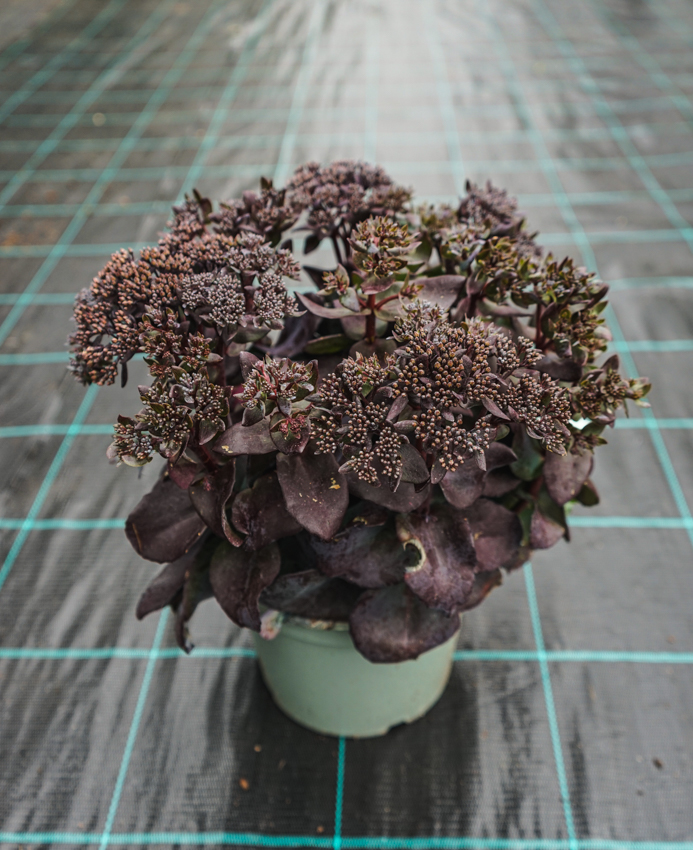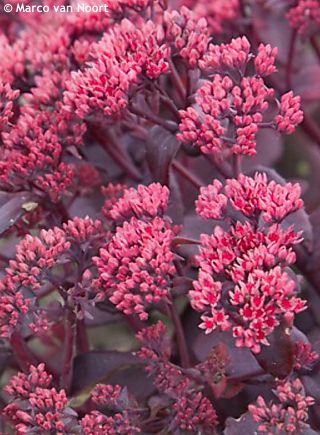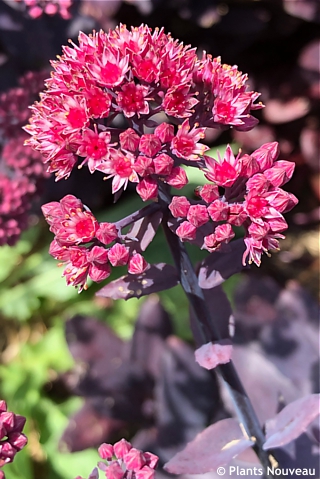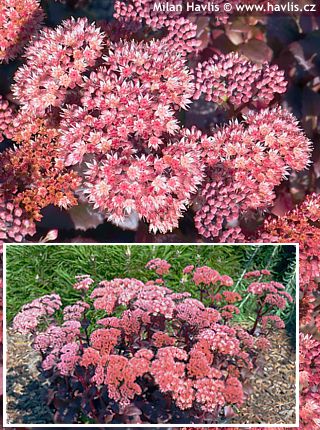Sedum (Hylotelephium) 'NIGHT EMBERS' stonecrop, orpine
Sedum
Stonecrops (orpines) are well-known and cherished plants, fondly remembered by our grandparents' gardens. They have fleshy leaves and bloom from spring to autumn depending on the species and cultivar. The genus Hylotelephium includes approximately 33 species of succulent perennials found across the temperate regions of Asia, Europe, and North America. These are taller varieties, sometimes called "stemmed" types, with abundant flower clusters appearing from summer into fall. Carl Linnaeus had already classified them as individual species in 1753, but their separation into the genus Hylotelephium didn’t occur until 1977, thanks to Japanese botanist Hideaki Ohba, who pointed out striking morphological differences. The name is derived from Greek: hylo- meaning forest and telephium referring to the mythical Telephus, son of Heracles, who was wounded by Achilles' spear. His injury, according to legend, didn’t heal until treated with rust scraped from that very weapon – symbolizing paradoxical healing. This theme echoes in folk uses of stonecrop, which was traditionally applied to wounds, especially stubborn ones.
Are you drawn to bold garden structure? They’re called “architectural features” for a reason. 😊 Night Embers stonecrop demands attention even from a distance – it stands like a dark sculpture among pastel-toned perennials. Its undeniable focal point is the foliage: plum-purple to almost black, fleshy, ovate to rounded leaves with striking metallic sheen – neither glossy nor matte. They grow along fleshy stems reaching 50–60 cm tall, topped by rounded clusters of small, star-shaped flowers that appear in late summer. They are dusty pink to light mauve which makes a stunning contrast against dark backgrounds, like flames glowing in twilight.
The plant grows upright, forming a narrow vase-shaped clump about 50–60 cm wide when mature and maintains a tidy form without flopping. The foliage is highly resistant to powdery mildew, so spraying is rarely necessary. Its nectar-rich flowers attract bees and provide vital forage at the start of autumn. They bloom for roughly six weeks before the flower heads begin to dry. If you don’t mind their faded look and the stems remain firm, leave them on the plant—they decorate autumn beds beautifully when covered in hoar.
This cultivar was bred by American perennial guru Hans A. Hansen from Walters Gardens in Michigan and is protected under patent no. PP29211 from 2018. Night Embers loves full sun, where its colours shine brightest, and thrives with minimal watering, making it an excellent partner for drought-loving plants. For maximum effect, use bold contrast – think silver foliage like Santolina, Helichrysum or Artemisia. Garden classics such as brightly coloured Echinacea or compact rockery friends like Delosperma, Dianthus, or low-growing Gypsophila are great matches. You can also play with texture by adding smaller drought-tolerant grasses like steel-blue, beige, or fresh green Festuca.
It needs very well-drained soil and doesn’t tolerate excess moisture – heavy soil or constantly wet spots may cause root and stem rot. Beyond that, care is minimal: no fertilizing, pruning, or winter protection required. In spring, remove old stems by cutting them close to the ground and allow fresh growth to emerge from below. Don't snap the stems off—use pruning shears to avoid damaging new buds forming at the base, often already present from the previous autumn. Watch out for slugs and act promptly if they appear. Night Embers is hardy down to approx. –40 °C (USDA zone 3).
Last update 25-07-2025
Goods are shipped all over Europe. For Russia and U.K. and for further details please read about SHIPPING OPTIONS HERE.
Are you interested in a serious discount for orders NOV-FEB? Check your options here.
THE PRICES INCLUDE VAT of 15%. For quick conversion you can use 1 CZK = approx. 0.04 EUR
- STANDARD QUALITY - Plants of this group are 1st class quality with number of branches and overall density adequate to their size and age, considering they were container grown.
- DE LUXE QUALITY - This label guarantees a luxurious quality of manually selected plants that, compared to their height and age, are exceptionally dense and beautiful.
- EXTRA - These plants are usually mature and bigger specimens with exceptional overall appearance.
- STANDARD (as described in the plant form) means a tree with a trunk of 190-210 cm and a crown at the top, unless specified differently. The commercial size for trees is their girth measured in the height of 1m from ground.
- HOBBY - These plants are of the same quality as our standard-quality plants but younger and therefore cheaper.
- SHRUB - a woody plant with branches growing bushy from the ground level.
- HALF-STANDARD or MINI-STANDARD - a small tree with shorter trunk, its size is usually specified.
- FEATHERED - These are trees with branches growing already from the base of the trunk and up along the stem.
- GRASSES and PERENNIALS - Sizes given usually read the diameter of the pot or the clump, as specified.



















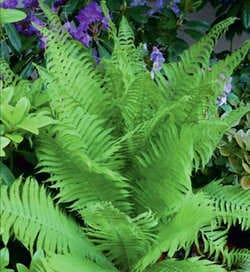




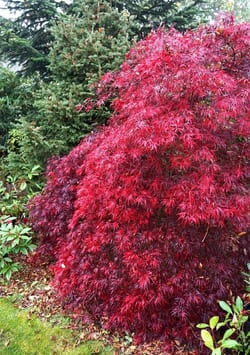
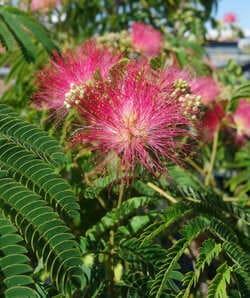
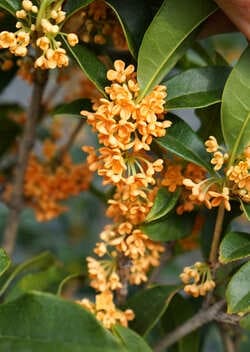



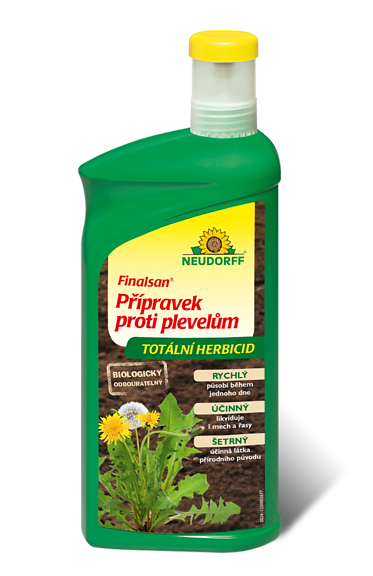


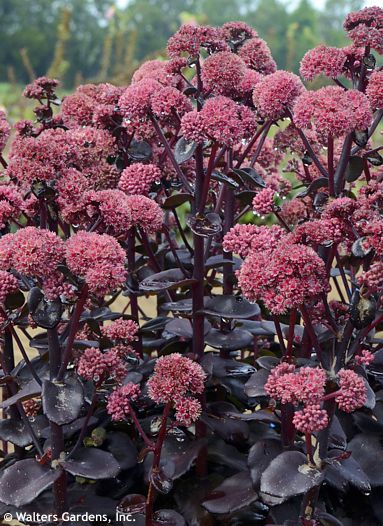
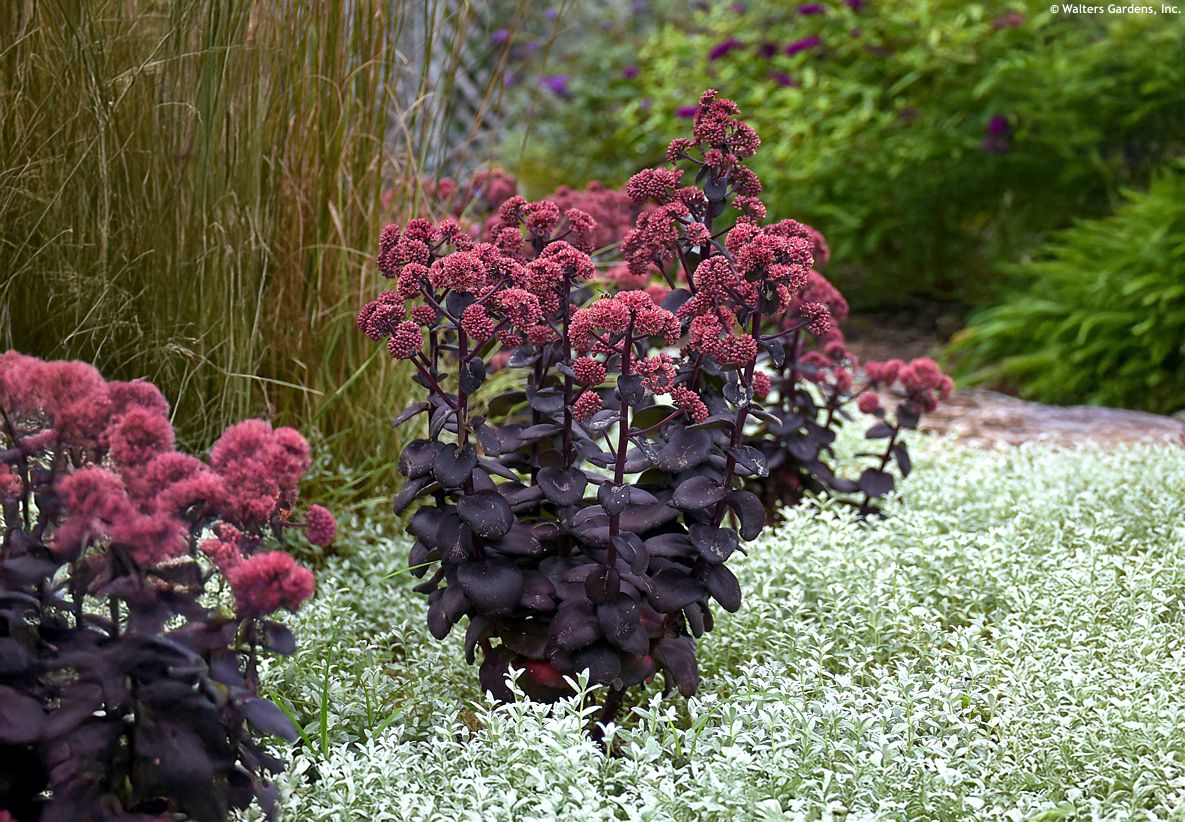
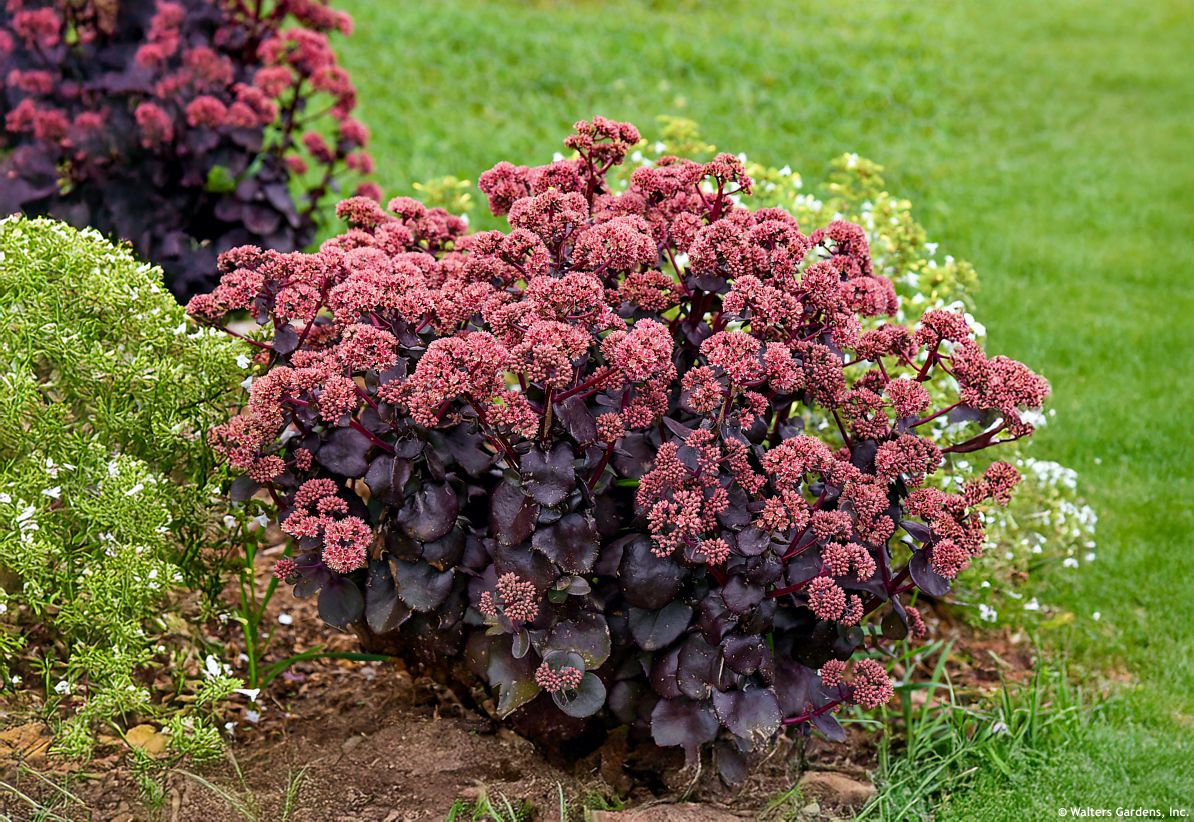
.jpg)

